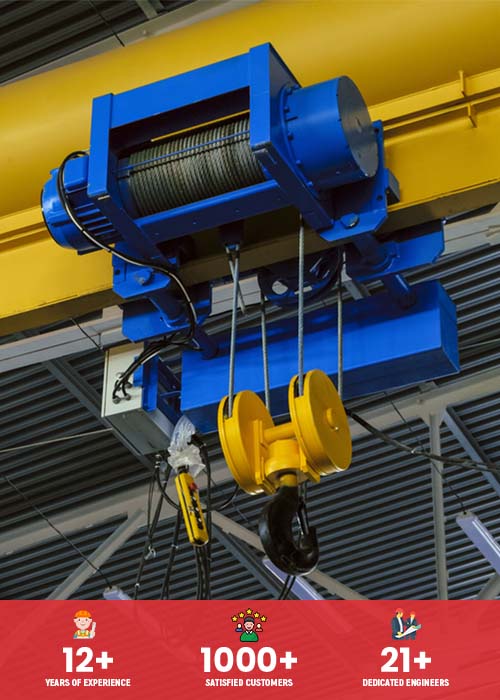How much headroom do I need?
There are a lot of factors to take into account when planning a lift, from the best piece of equipment to use for the job to the headroom that will be needed. Depending on the kind of equipment you’ll be utilising, you may calculate how much headroom it will require. Let us have a look at how to calculate the necessary headroom, working the way up from the simplest calculations to the more intricate ones. Every project, from inside lifts with a gantry or fixed steel beam to an on-site crawler crane setup, involves consideration of headroom. The experts of crane manufacturer in Ahmedabad can help you understand the right proportions for your requirements.
Let us assume that a boiler is being hoisted using a steel gantry that has been raised to its highest setting. A steam boiler from LGH with dimensions of 6.5’W x 12’L x 13’H and a shipping weight of 12,400 lbs will be lifted using a steel gantry with a maximum height beneath the beam of 15’10”. In this case, assuming a perfectly balanced centre of gravity, you may get away with using two 5-ton steel setup gantries to accommodate the length (CG). This indicates that we have just under three feet (34 inches) of vacant space above the unit for our rigging to fit within, based on the maximum height given above. It seems like a lot, yes? Starting from the beam down, let’s examine some of the choices for this lift’s headroom needs.
Beam Clamps
We can split the shipment weight in half to equal 6,200 lbs. and suppose that is the weight visible on each gantry given the weight and the same CG. A 2-ton clamp is adequate since, after dividing that by the two clamps needed, each clamp must be able to support 3,100 lbs. This would require a Riley 2-ton Superclamp model S1A with a 4,480 lb weight rating, taking up around 10 inches of headroom. There are now exactly two feet of headroom over your boiler.
Hand Chain Hoist
The most likely option, using the same numbers as previously and requiring your hoist to lift only 3,100 lbs, would be your 2-ton Coffing hand chain hoist, which requires an additional 15 inches of headroom. You now have 9 inches of headroom or 9 inches of lift available above the boiler. Keep in mind that this is one of the more labor-intensive solutions because it requires people to pull the chain.
Electric Chain Hoist
Although it is expensive, an electric chain hoist will significantly reduce labour and time requirements. With the clamp in place and 22.6″ of headroom needed to operate a 2-ton Harrington SNER020L hoist, there is only 1.5″ of free space above the boiler unit.
Air Chain Hoist
The air hoist’s convenience comes at the sacrifice of headroom, much like the electric hoist does. While the 2-ton JDN Profi (NS) Series 2TI model leaves a little more room, it consumes 19.6″ of headroom, leaving you with only 4.4″ of available headroom/lift for the boiler.
Low-Headroom or Ultra-low Headroom Trolley Hoists
If you need to lift the boiler more than 9 inches and precision is important, this solution can be appealing. However, it would be wise to install end stops to the beam to ensure safety. To prevent unintentional trolley movement, your beam should always be square and level. The needed headroom is reduced by the trolley’s integration into the hoist unit to 16.5″ for the low headroom type or 6.5″ for the ultra-low hoist. There is still a sizable 17.5″ or 27.5″ of headroom available. But there is a catch with these hoists. In addition to the trolley’s potential for unintended movement, the low headroom hoist weighs 107 pounds whereas the ultra-low hoist weighs 395 pounds when fully chained up, which may influence the decision.
After examining the alternatives, it is evident that the hand-chain hoist offers the highest level of portability while yet leaving enough room. The greatest possibilities for remaining headroom/lift space are those where the gantry stays absolutely plumb and level during the lift and when the weight of the trolley hoists is minimal.
As you can see, the amount of headroom needed on any lift plan can pile up quite rapidly. To make sure you have enough room before starting a lift, it is crucial to understand how to determine your headroom.


